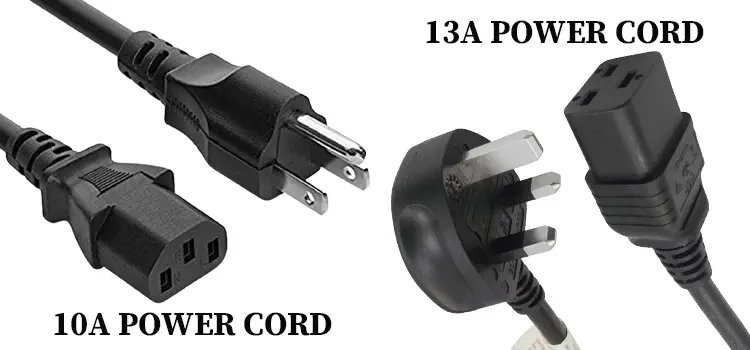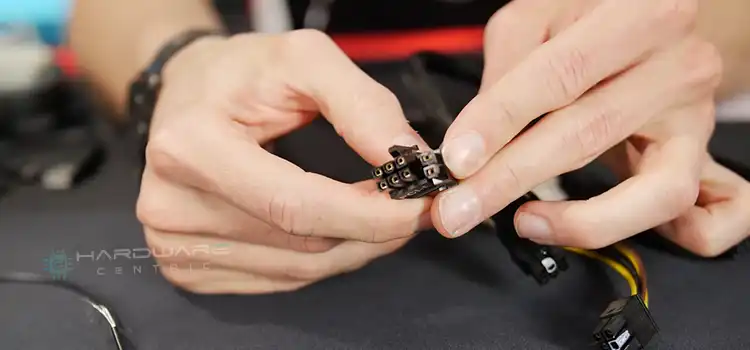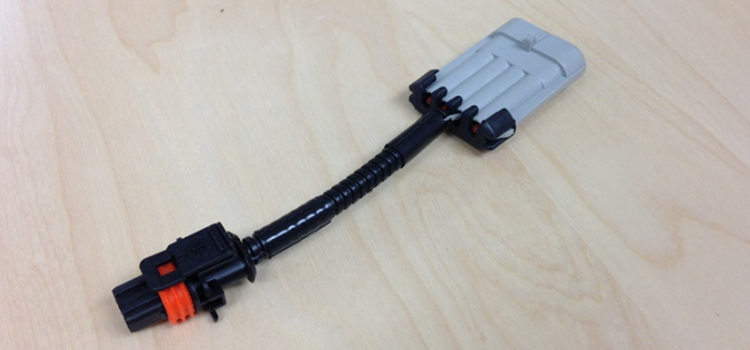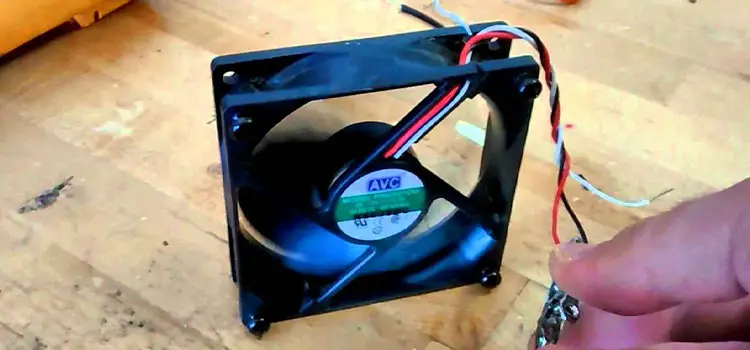10A vs 13A Power Cord | Is 13A a Safer Option Than 10A?
Despite no burnt-out power cord instances, people get confused over the 10A VS 13A power cord topic. Except for a few minor differences, a 10A and a 13A power cord are almost the same. Though they have different wire gauge measurements, they are swappable.
As long as the power output is below what a 10A cord can handle, you can replace a 13A power cord with it. But once you cross that mark where power output rating increases, using a 13A power cord is safer.

10A vs 13A Power Cord – What’s the difference?
A standard 6ft 10A power cord is compatible with most electronic devices having a 3-pin shroud connector. Such devices include desktop PCs, printers, monitors, and so on. Most interestingly, the same goes for a 13A power cord. So, what’s the point behind the separate naming scheme? Let’s find out.
Wire Gauge
While both 10A and 13A power cords can serve the same purpose, they vary in wire gauge size. Depending on that, the cable length will differ. However, as most power cables have identical cable lengths, the performance difference is not night and day.
The allowed wire gauge for 10A cords is 18, whereas that for 13A cords is 16. It means a 13A wire is thicker than a regular 10A one. Usually, the thicker the wire, the more current it can pass without getting overheated. So, a 13A power cord will be better for higher power delivery. Yet, you won’t notice a fuse inside any of them on regular usage.
Yet, you won’t notice a fuse inside any of them on regular usage.
What are the Power Output Ratings
The power output rating of desktop power supplies starts from as low as 200W, for which 13A cords are a bit overkill. Therefore, 10A power cords will get the job done for the most part. As power supplies barely cross the 1200W mark, you won’t notice a drop even with more powerful specs.
However, the rating can go up to 1800 watts on enthusiast-class PSUs. If your PC has got such ultra-high-end specs, you’ll be better off with a 13A power cord instead. And at 250V, 13A cords can handle up to 3250 watts, which is more than enough.
Which Is the Safer Option Between 13A and 10A?
It is clear by now that there are no significant differences between these two cords, except the differences mentioned above. That means you can use both cords in the same field whilst the power output is under 10A ‘s coverage. So, you can use any of them according to your usage and preference. But a 13A cord is the best option in terms of a higher power output rating.
Frequently Asked Questions (FAQs)
Are Power Cords Universal?
Power cords are indeed universal. Of course, the obvious regional difference in the plug configuration is very much apparent, but to an extent where it doesn’t affect the functionality. For example, you can still find a few CRT monitors that use the same power cord seen mainly in printers.
What Does 10A Mean on Extension Cord?
The voltage on power sockets at any given region will be either 240 or 120 volts. Therefore, if you calculate the power delivery from a 10A cable, you’ll get 2400 or 1200 watts, respectively, depending on the socket. And that pretty much describes what the 10A label stands for.
Does It Matter What Power Cord I Use?
To put it simply, it does not matter what power cord you use, especially when it comes to 110VAC power cords. Yet, you cannot swap the brands of the cables connecting your PC’s motherboard to the PSU, GPU, and other components.
Bottom Line
Here’s the takeaway. If you’ve got a power supply rated at 800-850W or less than 1200W, a 10A power cord is all you need. You can use a 13A one as well, although it is not mandatory. On the contrary, you must use a 13A power cord if the power output rating of your PSU is high (1200W or above).
Subscribe to our newsletter
& plug into
the world of PC Hardwares


![[5 Fixes] Please Power Down and Connect the PCIe Power Cable?](https://www.hardwarecentric.com/wp-content/uploads/2022/03/How-to-Fix-If-Please-Power-Down-and-Connect-the-PCIe-Power-Cable.jpg)

![[5 Solutions] Power Supply Fan Not Spinning](https://www.hardwarecentric.com/wp-content/uploads/2023/08/Power-Supply-Fan-Not-Spinning.webp)

